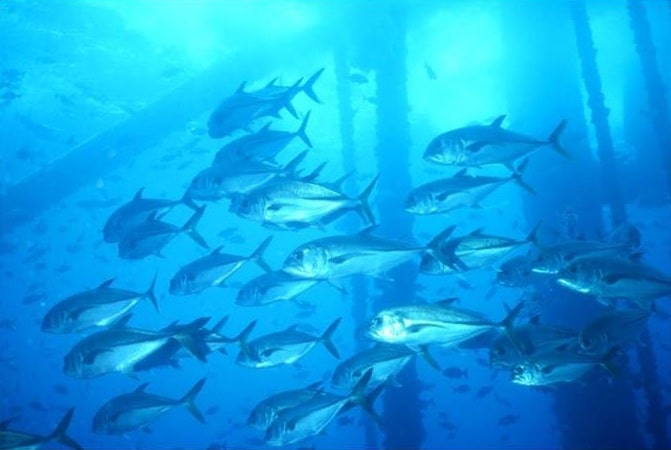
Rigs to Reefs
The Bureau of Safety and Environmental Enforcement (BSEE) rolled out new guidelines this that should make it easier for energy companies to “reef” obsolete platforms and related structures in the Gulf of Mexico where they can continue to serve as valuable marine habitat.
“This is welcome news for anglers and conservationists,” said Pat Murray, president of Coastal Conservation Association (CCA). “It is good to see this positive progress, and we appreciate BSEE and all of the stakeholders who continue to work on solutions to this complex issue.”
The vast network of energy platforms in the Gulf of Mexico forms what is widely regarded as the largest manmade reef in the world, but due to a variety of liability issues and environmental concerns, federal regulations require that energy companies remove the structures if they are unused for a period of years. Concerns have mounted in recent years as the pace of removals has increased while little new structure has been placed.
Over the history of offshore energy development, nearly 6,000 structures have been placed in the Gulf of Mexico with fewer than 3,000 standing today.
The new policy directive states that BSEE supports and encourages the use of obsolete oil and gas structures as artificial reefs, and provides greater opportunities for reefing by removing the five-mile buffer zone between reefing areas to two miles, allows for reefing in place when appropriate in Special Artificial Reef Sites or SARS, and provides for extensions to regulatory decommissioning deadlines for companies pursuing a “Rigs to Reefs” proposal.
“The revised rigs to reefs policy is the result of a continued dialogue between federal agencies, states and affected stakeholders,” said BSEE Director James Watson. “The CCA has been very engaged throughout this process and was instrumental in bringing people together to discuss these complex issues and informing this policy.”
The policy states that the use of explosives on platforms that are proposed for reefing will be evaluated on a case-by-case basis, but will not be approved if analysis determines their use will cause harm to established artificial reef sites and/or natural biological features. The policy formalizes many of the changes that have been discussed at workshops with stakeholders in New Orleans and Houston over the past year.
“For the past several months, we have been working with our federal partners, state officials and affected stakeholders in the Gulf of Mexico region to learn about their needs and concerns regarding the inclusion of oil and gas infrastructure in the states’ artificial reef programs,” Watson said. “This policy is reflective of the feedback we received. It provides states greater flexibility in their planning and addresses the multiple uses for these areas while ensuring the marine environment is protected.”
Watson stated that his agency is also increasing staff to better deal with the increased pace of removals and reefing proposals, and he outlined plans for a GIS (geographic information system) map of every platform in federal waters of the Gulf with an overlay of information on each one. The map will be used to interact with stakeholders to get a better understanding of which structures may make the best candidates for reefing. Ideally, information gathered on specific platforms that are greatly valued by anglers, divers or other stakeholders will be used to promote reefing options with the structure’s owner.








